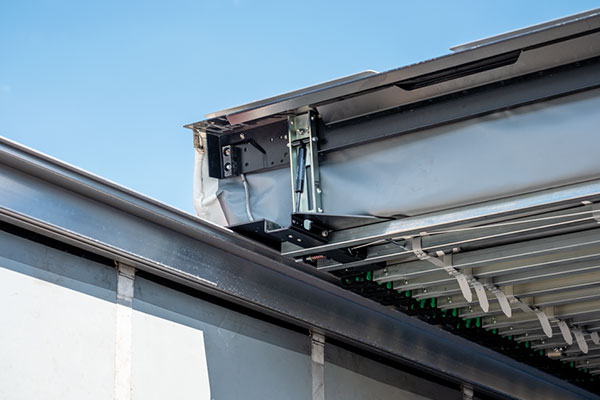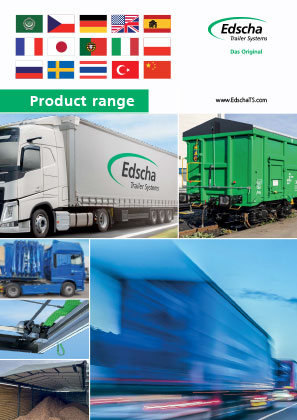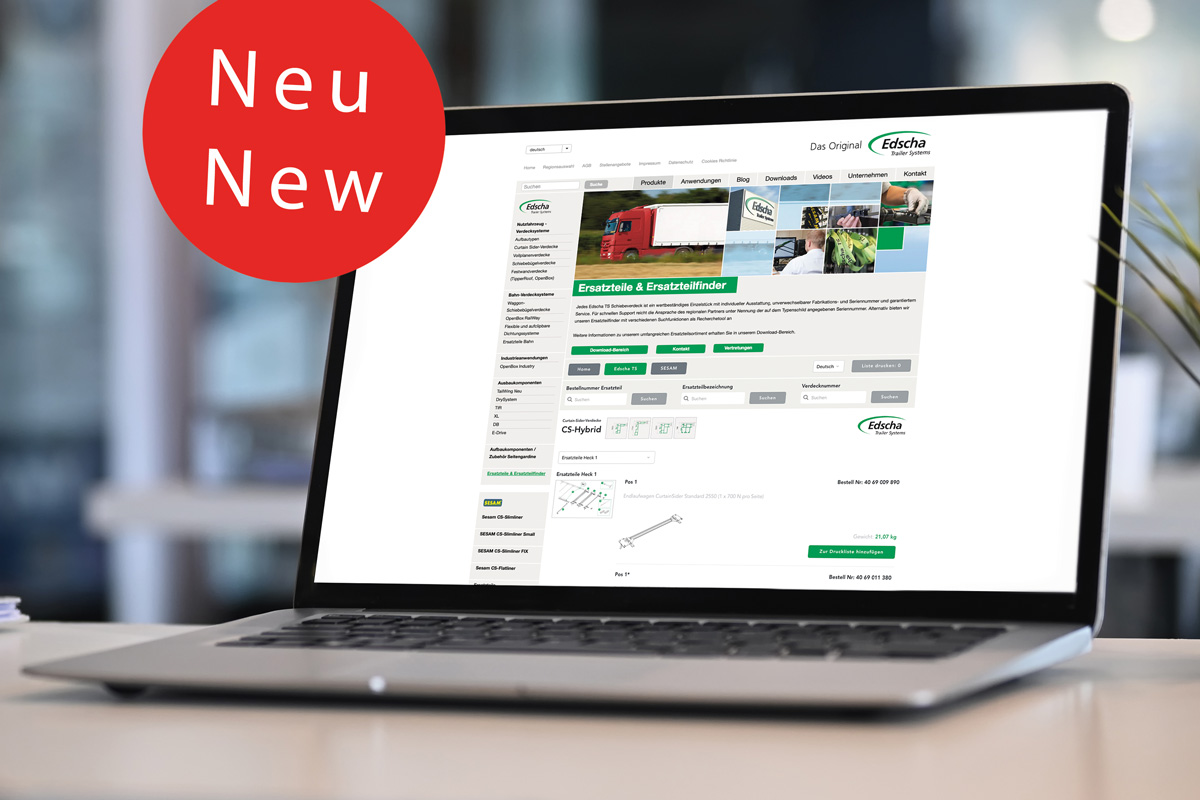Sliding roof systems and their advantages
Therefore, there are optimized vehicle concepts for each type of load, which save time and therefore money. For each load there is a suitable type of vehicle, which in turn can be equipped with the most appropriate sliding roof system such as side curtains, drop sides, without bodywork or with fixed walls. It is important to select or adapt the trucks, whether solo or articulated or with semitrailers, according to the jobs. Are they mainly mainline jobs or are they regional or local distribution routes? Do I have only one loading and one unloading per day? Can the loading/unloading time be a little longer, or do I have to speed up? If I have to drive to several stations in one day, a canopy that can be operated quickly by one person can save time and costs.
Pallets are loaded differently than bulky goods or heavy steel coils. Particularly in the case of frequently recurring orders or for specialized forwarders, load-optimized canopies save an enormous amount of time and increase safety for the driver and the cargo in equal measure. Only a cost-benefit analysis can clarify what is best for the individual forwarder. The canopy systems - adapted to special cargo shapes and goods - or designed for a wide range as an all-purpose weapon - are the focus here. Reason enough to briefly present the four main types:

Curtain Sider – safe and fast
Vehicles with a curtain sider body - also known as a sliding roof with side curtains - have one or two sliding tarpaulins on the sides. Load carriers built in this way no longer have drop sides and can thus be loaded quickly and easily from the side. Above a certain length of the trailer, the stanchions between the corner stanchions are supported by up to three additional sliding stanchions. Horizontal insertion plates are inserted between the stanchions to secure the load and prevent it from tipping. Of course, the roof can also be completely slid easily and quickly by means of a pull rod and green pull strap, on one or both sides. So there is literally nothing standing in the way of loading from above.
To move the Curtain Sider canopy and make the cargo area accessible for forklifts, cranes or telescopic handlers, all it takes is one person and a small amount of force. Vehicle operators do not have to climb around on the trailer. Regardless of whether the loading is done from above, for example with coils, or whether pallets or other modular unit loads and long goods have to be loaded from the side - firstly, the loading area remains dry when loaded from the side, and secondly, the sliding roofs can be easily moved on one or both sides. The Curtain Sider from Edscha TS are additionally certified with the TIR / Intermodal according to EN283 / Load Securing XL according to EN12642.
Full tarpaulin roofs – flexible and proven
The continuous development of full tarpaulin roofs paralleled the triumphant advance of semitrailers as a means of transport at the beginning of the 20th century. Today, as in the past, the tarpaulin roofs protect the load from falling down and from wind and weather. The body convinces by its high flexibility, which was significantly increased by the invention of the sliding roof by Edscha TS in 1969. The roof rails are made of steel and can be quickly dismantled and replaced.
With the full tarpaulin roof, the complete tarpaulin is quickly moved to the bulkhead and the cargo area is free for loading. For safe loading at the roadside, tail lifts are also available for the full tarpaulin covers. For example, the "tailwing" version from Edscha TS opens the entire rear loading area very quickly: The upper third consists of a flap that opens upward, while the tail lift moves downward, creating an opening as a through-loading system. Transport companies with frequently changing transport goods or in urban delivery operations get an all-round soft top for almost any application. Dropping of cargo is prevented by the drop sides and insertable slats between the stanchions. The full tarpaulin cover is also designed for one-man operation and certified according to TIR/Intermodal EN 283.
However, all-round solutions such as the full tarpaulin roof are not optimally suited to every application. General cargo of any kind and, due to the drop side, also sharp-edged loads can be transported safely so that the safety of people and goods is guaranteed.
Sliding bow roof – access to the entire cargo area in seconds
The sliding bow roof is a body in which the tarpaulin can be pulled completely to the side by its sliding bows. With a sliding bow system, in contrast to the sliding tarpaulin, where only the tarpaulin is moved but the supporting frame of the tarpaulin remains standing, the complete loading area is exposed. With today's Edscha TS sliding bow roofs, the tarpaulin body can be moved both towards the driver's cab and to the rear. With a sliding bar roof, the complete loading area can be uncovered from the ground in a few seconds by just one person. These bodies are particularly suitable for transporting coils and heavy, bulky goods in the construction industry. However, the load must be secured more elaborately in general cargo or groupage transport.
Solid Fixed-wall roofs - moving bulk material safely
For the transport of bulk materials, bodies with solid walls are necessary, i.e. dumpers or trucks with boxes, as well as containers. Neither the type of loading nor tipping or unloading is important. The solid walls are mandatory against cargo loss. Due to the different bulk materials, various covers and vehicles have been developed over time for the various loading conditions. What they all have in common is the fact that the top must be laterally elastic so that it can always follow the wall as it deforms under the load pressure. Only then is the load reasonably sealed and no substances or particles are lost during the journey. The covers of box trucks and dump trucks not only prevent unwanted loss of cargo, but also save diesel and thus protect the environment.
Edscha TS offers the TipperRoof canopy for dump trucks that securely covers the dump body including bulk material, can be operated electrically from the ground and can be used for almost any dump body and is ready for immediate use. In addition, there are the OpenBox Road & Offroad box bodies, which are suitable for all trailers with solid walls and are specially designed for moving floor applications and containers. A moving floor is a hydraulically driven floor that conveys bulk material out through the rear. Loading of skips or bodies with fixed walls is done via hoppers, filling pipes or laterally by wheel loader.






